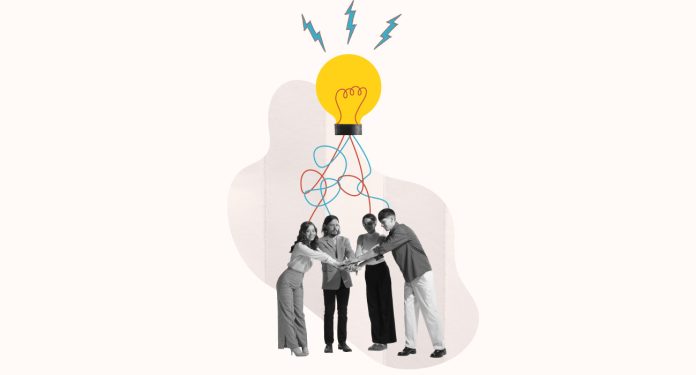CMO Amanda Cole explains how integrating AI tools has saved hundreds of hours, reshaped workflows, and challenged the myths about machines replacing humans.
 Nine months ago, the marketing team at Bloomreach—a company long associated with e-commerce personalization—decided to make a bold leap into the AI era. It was not a cautious, incremental test. Instead, under the leadership of Chief Marketing Officer Amanda Cole, the organization embraced a sweeping integration of artificial intelligence into nearly every corner of its operations.
Nine months ago, the marketing team at Bloomreach—a company long associated with e-commerce personalization—decided to make a bold leap into the AI era. It was not a cautious, incremental test. Instead, under the leadership of Chief Marketing Officer Amanda Cole, the organization embraced a sweeping integration of artificial intelligence into nearly every corner of its operations.
The results? More than 70% of Bloomreach’s 1,000 employees have adopted Glean Chat, an AI-powered knowledge management tool, with an even higher 77% uptake in the marketing department. Over 45,000 messages have been exchanged through the platform—each one a small testament to a cultural shift where AI is no longer a novelty but a daily companion. For a distributed, virtual-first workforce, the ability to retrieve internal information in seconds or generate copy and analyze data without human bottlenecks has been, as Cole describes it, “game-changing.”
But this isn’t just about saving a few minutes here and there. Over the past few months, the marketing team estimates it has saved hundreds of hours through AI-assisted workflows. Thousands of prospect outreach emails have been generated via 6Sense’s conversational AI technology, enabling the team to reach audiences that would have been impossible through manual effort alone. In content marketing, JasperAI has churned out 331,000 words in just three months—a feat that once would have required a small army of writers and editors.
“The point,” Cole says, “isn’t to chase efficiency for its own sake. It’s about freeing our people to focus on what matters most—strategy, creativity, and delivering results that move the needle.”
The Misconception Problem
Still, as with any technological shift of this magnitude, there is no shortage of skepticism. Cole quickly identifies the most stubborn myth she encounters: the belief that AI can “do everything automatically.”
“It’s not magic,” she cautions. “AI is intended to augment human capabilities, not replace them.” The distinction is more than semantic—it’s philosophical. For all the noise about algorithms replacing marketers, Cole believes that AI’s real value lies in relieving teams of the repetitive, low-value work that often dilutes creative energy.
Data analysis, content drafting, and performance reporting are essential tasks that consume time and mental bandwidth. AI excels at handling them, provided it’s fed with clean, high-quality data. Without that, the output risks being not just imperfect, but actively misleading. “AI thrives on large, accurate data sets,” Cole says. “Poor or fragmented data can lead to inaccurate insights and ineffective strategies.”
In her view, the relationship between AI and marketers is symbiotic. Humans bring judgment, empathy, and an understanding of brand nuance—traits no algorithm can replicate with complete authenticity. Conversely, AI brings speed, pattern recognition, and the ability to process information at a scale no human can match. Together, they form what she calls “a strategic partnership.”
The Culture of Adoption
It’s one thing to install a new technology in an organization; it’s another to get people to use it. For Cole, adopting Glean Chat and other AI tools wasn’t a happy accident—it resulted from intentional culture-building.
“From the start, we framed AI not as a threat, but as an opportunity,” she explains. “We gave people the space to experiment, fail, and figure out where the tools could really help them.”
This framing matters. In many companies, AI rollouts are accompanied by an undercurrent of anxiety. Employees wonder if their roles will be automated out of existence. Managers, meanwhile, worry about over-reliance on tools that might produce generic or tone-deaf results. By making experimentation part of the process, Bloomreach lowered the psychological barriers that often slow adoption.
The company also strategically decided to start with internal-facing tools before rolling out customer-facing AI initiatives. This created an environment where employees could experience the benefits of AI in a low-stakes setting—retrieving documents, drafting internal communications, or running small-scale tests—before applying it to campaigns with direct market impact.
The Human Element
One of Cole’s most pointed warnings is losing the “human perspective” in marketing. AI can produce polished copy, identify audience segments, and even predict customer behavior—but it cannot intuit cultural shifts, moral boundaries, or the subtle humor and personality that turn campaigns into cultural moments.
“We should never lean so heavily on AI that we forget our job is to connect with people,” she says. This is where Bloomreach invests heavily in editorial oversight, brand guardianship, and the continuous refinement of AI outputs to ensure they align with the company’s voice.
This human curation isn’t just about avoiding mistakes—it’s about maintaining a brand’s soul. A perfectly targeted, technically correct email that lacks personality might meet the performance baseline, but it will never inspire loyalty or advocacy. “At the end of the day,” Cole says, “customers don’t connect with a line of code. They connect with a story.”
Redefining Productivity
When Cole talks about productivity gains from AI, she is careful to frame them in terms of redeployed human effort rather than replaced human effort. The hours saved by Glean Chat, JasperAI, and 6Sense aren’t used to shrink headcount—they’re used to expand creative scope.
Imagine, for instance, a team that once struggled to launch a single campaign every few weeks. With AI taking care of first drafts, data pulls, and audience segmentation, that same team can launch several targeted campaigns each week, each tailored to a specific customer behavior or market signal. The result isn’t just more campaigns—it’s more relevant campaigns.
This expansion of capacity, Cole argues, is what makes AI transformative rather than merely incremental. “We’re not just doing the same work faster—we’re doing more of the work that grows the business.”
The Future Is a Partnership
If there is a unifying theme to Bloomreach’s AI journey, the technology is a tool, not a takeover. The goal is not to build a marketing department of robots but one where humans and machines each do what they do best.
Cole envisions a future where marketers are more strategic than ever—spending their days analyzing trends, dreaming up creative concepts, and crafting campaigns that resonate emotionally—while AI handles the data parsing, A/B testing, and content scaffolding that can bog down those creative ambitions.
“The more we let AI handle the repetitive stuff,” she says, “the more human our marketing can actually become.”
In the end, the story of AI at Bloomreach isn’t just about technology—it’s about trust—trust in the tools, trust in the data, and perhaps most importantly, trust in the humans who wield them. Cole’s approach suggests that the companies that will thrive in the AI era aren’t the ones that automate the most but the ones that integrate AI most thoughtfully—keeping people and the stories they tell at the center.










